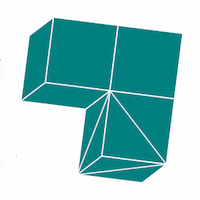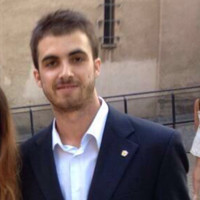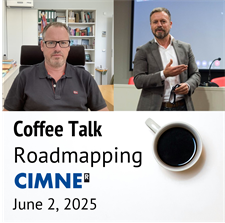events
PhD Thesis Defense - "Towards shock absorbing hyperelastic metamaterial design" by Alejandro Núñez
ABSTRACT
This thesis explores the possibilities and benefits of computational tools to be used in the analysis and design of shock absorbing metamaterials for industrial applications. The research is organized into two complementary chapters. The first part focuses on the computational modeling of shock propagation in hyperelastic materials, emphasizing its importance in analyzing and designing mechanical energy-absorbing materials. This approach is categorized as shock-capturing, as it aims to capture the effects of shock formation and propagation on the mechanical response of the solid. Numerical simulation of the onset and propagation of discontinuous strain waves (mechanical shocks) across a solid is performed in that specific approach, and it is computationally assessed in different loading situations. The concept of extrinsic dissipation, emerging from the breaking of polyconvexity constraints in hyperelastic materials, is recalled and exemplified via a large strain neo-Hookean polyconvex hyperelastic model which is perturbed in a number of different formats. The obtained mechanical responses, exhibiting propagating mechanical shocks, and the corresponding extrinsic dissipation, are explored together with the inherited computational issues, by means of representative numerical examples. Additionally, the problem of the dynamic impact of a rigid solid on low-density shock-absorbing specimens made of these perturbed hyperelastic materials is analyzed, and the amount and time-evolution of the resulting extrinsic dissipation are evaluated to characterize their performance for shock-absorbing purposes. Furthermore, the exhibited property of shape recovery after impact is highlighted as a distinctive feature in front of alternative shock-absorbing materials. The second part of the thesis explores the potential of computational multiscale methods, in conjunction with massive buckling-lattice structures at the metamaterial core (meso/micro scale), to provide a suitable framework for designing shock-absorbing metamaterials aimed at industrial applications. In this context, a prospective computational setting is considered under the hypothesis that, for a sufficiently complex microlattice topology, some localized regions might buckle within the lattice-structure core and propagate through it, giving rise to different loading-unloading paths, in such a way that hysteretic-like structural behaviors would take place, thus arising dissipative behaviors, even if the base material at the buckling micro-lattice behaves in a hyperelastic (thus intrinsically non-dissipative) manner. Using the standard Hill-Mandel homogenization principle, and assuming that the necessary separation of scales holds, the homogenized body, now living in a classical solid-mechanics setting, displays a homogenized non-convex behavior which exhibits extrinsic dissipation and, thus, could be potentially used (at reduced computational cost) for shock absorbing metamaterials analysis and design purposes. A tentative industrial application, to a sneaker’s insole design, has been then considered as a work’s target for evaluation of the room offered by the explored setting in the context of shock-absorbing metamaterial design. Finally, remarks on the scope and limitations of the work, and its significance for further advances in the field are emphasized.
PhD Advisors
- Advisor: Dr. Fco. Javier Oliver
- Co-advisor: Dr. Juan Carlos Cante
PHD CANDIDATE
 Mr. Alejandro Núñez is a Data Analyst and Senior Consultant with a PhD in Aerospace Engineering from the Universitat Politècnica de Catalunya. He conducted his PhD research at CIMNE's “Structural and Particle Mechanics” Research Cluster, focusing on the computational design of materials with unique mechanical properties. He has experience in solving business problems using analytical and computational tools, with advanced programming skills in Matlab, SQL, Python, and R. Based in Barcelona, Catalonia, Spain, his technical skills include C++, CATIA, Nastran, AutoCAD, and SolidWorks. Mr. Núñez has worked as a Senior Consultant at Flare | Aviation Consulting and as a Research Engineer at the Universitat Politècnica de Catalunya.
Mr. Alejandro Núñez is a Data Analyst and Senior Consultant with a PhD in Aerospace Engineering from the Universitat Politècnica de Catalunya. He conducted his PhD research at CIMNE's “Structural and Particle Mechanics” Research Cluster, focusing on the computational design of materials with unique mechanical properties. He has experience in solving business problems using analytical and computational tools, with advanced programming skills in Matlab, SQL, Python, and R. Based in Barcelona, Catalonia, Spain, his technical skills include C++, CATIA, Nastran, AutoCAD, and SolidWorks. Mr. Núñez has worked as a Senior Consultant at Flare | Aviation Consulting and as a Research Engineer at the Universitat Politècnica de Catalunya.





















